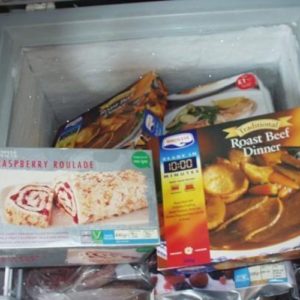 The rise of cooking courses, fair trade foods and farm-to-fork restaurants may be coming at the expense of more traditional American staples. While today it’s not at all uncommon to see grocery store patrons wheeling carts full of fresh produce, meat and fruit, it was not that long ago that Americans relied more on frozen foods and meals. Recent studies indicate, in fact, that frozen foods are beginning to lag dangerously behind newer, fresher options in terms of market share.
The rise of cooking courses, fair trade foods and farm-to-fork restaurants may be coming at the expense of more traditional American staples. While today it’s not at all uncommon to see grocery store patrons wheeling carts full of fresh produce, meat and fruit, it was not that long ago that Americans relied more on frozen foods and meals. Recent studies indicate, in fact, that frozen foods are beginning to lag dangerously behind newer, fresher options in terms of market share.
Nielsen, a market research company, revealed in a recent study that unit sales of frozen juice, chicken and pizza have all fallen since 2009. Perhaps even more upsetting for producers of these products is that the dollar amounts of their sales have lagged behind the rate of inflation for the past few years, indicating a stark decrease in consumer interest. Sales of frozen meals fell 3 percent between 2009 and 2013, leaving the total annual gros12s at $8.92 billion.
Given that the decrease in sales is in response to the increased accessibility to fresh, healthy options, it’s unsurprising that some of the biggest hits taken by frozen food producers have been among those who market their frozen meals as healthy alternatives. For examples, Nestle-owned Lean Cuisine has lost a quarter of its total sales over the past five years, falling to less than $1 billion in annual revenue. Rob McCutcheon, the president of ConAgra foods’s frozen-food division, which has just discontinued several of their Healthy Choice frozen dinners, explained that he believes the drop in sales is due to changing attitudes regarding food quality.
“Within this foodie culture the last few years, I think there has been a change in how some people define healthy foods,” McCutcheon told the Wall Street Journal. “There is definitely a push towards products that are more real, higher quality, more homemade and closer to the source.”

